by Aishwarya Samanta|Published November 9, 2020-Updated November 9, 2020
The nineteenth century brought with itself a new surge of agitation in the state of Odisha when the Odia language was overpowered and neglected. At that time, the territory of Odisha extended from the long stretches of Ganga to Godavari but as ages passed, it succumbed to disintegration. The downfall came as a flair of Mukundadeva’s death and continued till 1936.
As time passed, the territory started disintegrating and neighbouring provinces of Bengal The Battle of the Land: Odia Linguistic Movement , Madras, Central provinces and Bihar took over the charge. Behind the scenes, the odia language was now reduced to the level of The Battle of the Land: Odia Linguistic Movement linguistic minority in those provinces. Situations worsened when the medium of instruction in education in many schools of Odisha was enforced to be in Bengali. The brief period of 1868 to 1870 saw the usage of Bengali language as the only agreeable, even beating Odia.
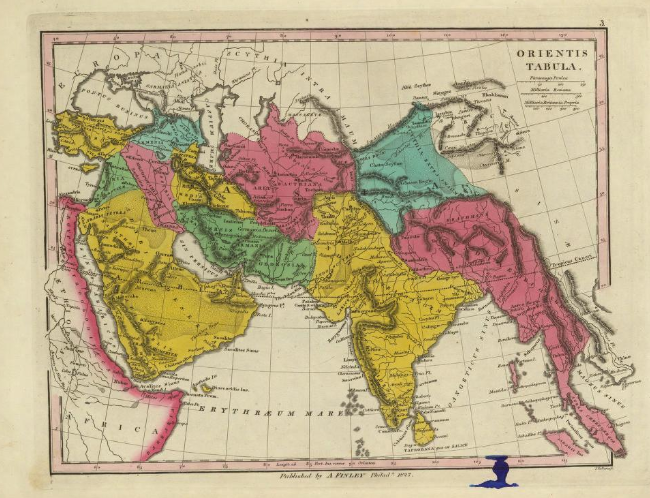
Thus, started the The Battle of the Land: Odia Linguistic Movement agitation among the new elite who emerged in the latter half of the nineteenth century in Odisha against the efforts of introducing Bengali language as the one and only medium of teaching in the Odia schools. The elites came together hand in hand to raise their voice in favour of the unification of Odia speaking areas. In addition to this, this fight was meant to safeguard the legitimate and liberal interest of all Odia speakers and act as a bridge to glorify the Odia language, culture and diversity.
Sambalpur Amalgamated with Odisha Division
In the year 1862, Sambalpur and the adjoining feudatory states were amalgamated for administrative convenience. As a result, the language barrier came into the limelight after officers of both the areas showed their reluctance in transferring to each other’s areas.
To come up with the solution, the Chief Commissioner of Nagpur issued a notification that gave way to Hindi as the official language of the schools, courts and offices and it came into force on January 1, 1896. This move was heavily criticised by the people of both sides as it would deprive them of govt jobs, force their kids to learn Hindi and the worst, pose threat to the glory of Odia language and culture.
Utkala Sammilani: Flagbearer in Odia Language Movement
The major role of Utkala Sammiani not only in the Odia language movement but also in the formation of Odisha as a separate province can never be judged. In the year 1902, the Odia speaking people of Ganjam sent a memorial to the then Viceroy Lord Curzon stating their eagerness and interest for the unification of Ganjam, Sambalpur and the Bengal presidency’s Odisha division under a single government and university.
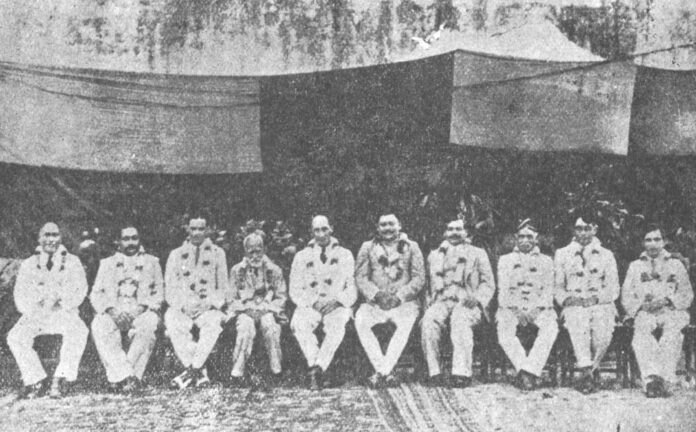
Months after this memorial was submitted, Baikuntha Nath De, the then Zamindar of Balasore forwarded yet another memorial to Viceroy Lord Curzon. In his memorial Baikuntha Nath De suggested the unification of every Odia speaking territories that came under the jurisdiction of Bengal, Madras and the Central Provinces. As the year came to an end, some like minded people met at the shore of Chilika, in Rambha to form the Ganjam Jatiya Samiti or the Ganjam National Association. The Samiti and subsequent meetings was chaired by the then Raja of Khalikotte.
In 1903, Shyam Sundar Rajguru chaired a conference of the Ganjam National Association at Berhampur which was attended by delegates of Cuttack, Balasore, Sambalpur and Balasore. In the conference The Battle of the Land, it was resolved to hand over all the proceedings of the conferences and they be held annually without any failure.
The Risley Circular
While the Ganjam National Association left no stones unturned in doing what it could to unify the Odia speaking provinces, in the meantime, the government of Lord Curzon made blueprints for the addition of Sambalpur, adjacent feudatory states, the district of Ganjam and agencies of Vizagpatnam to culminate in the Odisha Division. In December 1903, the blueprint was shared among the elite governments of Central Provinces, Bengal and Madras to get a hold of their suggestions. This plan was carried out by Henry Risley, the then Secretary to the Government of India, hence the Risley Circular.
Sacchidanand Sinha Resolution
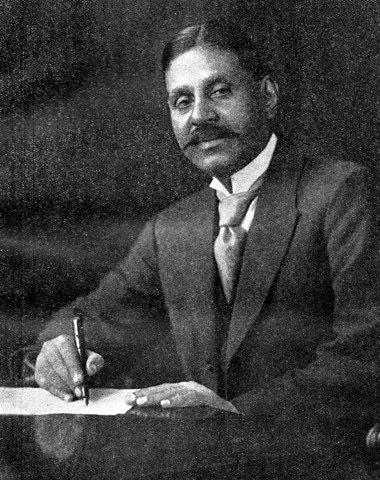
On 20th Feb 1920, a resolution was moved by Sacchidanand Sinha in the Imperial Legislative Council in order to formulate a scheme to amalgamate the Odia speaking tracts. While Bihar Province ruled in favour of the resolution, the Madras Governement was not in the mood to hand over the jurisdiction of Ganjam. With much struggle, in December 1924 The Battle of the Land, the Government of Madras was compelled to appoint a committee named the ‘Phillip-Duff’ committee to look into the issue The Battle of the Land.
Phillip-Duff Committee
It was only a matter of time that the Phillip Duff Committee was convinced of the impending desire of the Odia speaking people. But the Madras Government was adamant on its decision. As a result The Battle of the Land, the government proposed the issue of redistribution of territories will be overlooked by the Royal Statutory Commission who was scheduled to visit in 1928 The Battle of the Land.
The Birth of Odisha
Basing a report of the Joint Select Committee, a provision was made in the Government of India Act, 1935, for the formation of a new state Odisha. A 3rd March dated order in Council of the King Emperor, the province of Odisha was officially inaugurated on 1st April, 1936. Sir John Hubback took oath as the first Governor of Odisha on the same day.
Notable Scholars who Penned Down the Odia Lingustic Movement
- Fakir Mohan Senapati:
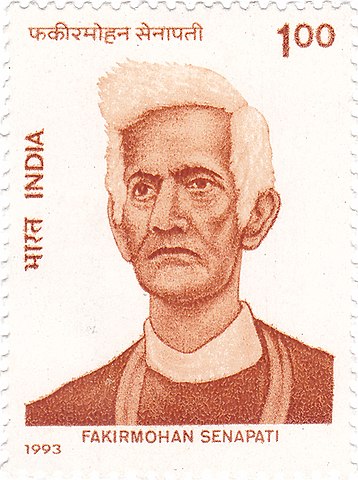
In his autobiography titled “Atmajivana Charita”, Fakir Mohan Senapati has mentioned briefly about the start of the Odia movement. He also started a scholarship about the movement in the year 1916 with the motto to bring the youth to the forefront in fighting for the right of the Odia language.
Praised for being one of the pioneers of Odia language, Senapati has made immense contributions for the unification of the Odia speaking people. He started a monthly journal from Balasore titled ‘Bodhadhyaini O Baleswar Smbad Bahika’ in the year 1869 but later transformed into a weekly from the year 1872.
You can read our another post on The Leaning Temple of Huma: A Unique Architectural Wonder
- Gourishankar Ray:
As there was a huge scarcity of Odia language books for the students of the elementary and university level, Ray prepared a huge number of Odia text books. He also established a press in Cuttack in the year 1866 for the publication of Odia text books. Additionally, he also printed Odia magazines, journals, newspapers and periodicals.
The press, thus contributed immensely in the Odia linguistic movement by printing journals, preparing text books and development of literature books. Gourishankar Ray also published a weekly titled ‘Utkala Dipika’ in the year 1866 from Cuttack which continued till 1936 even after his death. ‘Utkala Dipika’ is acclaimed to be the longest running journal of the 19th century in Odisha.
- Mrutunjay Rath:
Mrutunjay Rath who authored the biography of Karmavira Gourishankar Ray titled “Karma Jogi Gourishankara Ray’ in the year 1925, has provided with a detailed description about the development of linguistic movement in the seventh chapter titled ‘Utkala Bhassara Swataraksha’ of the biography. The chapter openly describes about how the movement that started in the schools and public offices of Odisha during the latter nineteenth century acted as shields against the Bengali language domination over Odia language.
The agitation came into force due to various reasons such as establishment of the press, distribution of school books for children in Odia language and mass awareness among the Odia language speaking people. Rath made huge contributions in the Odia linguistic movement by publishing numerous books in Odia language in the form of poetry and prose in order to re-establish nationalistic approach among the masses.
- Natabar Samantray:
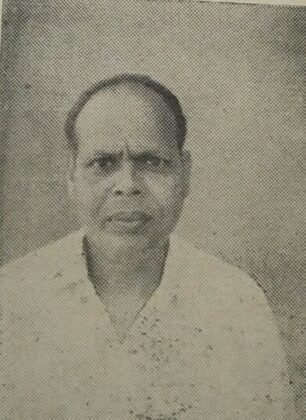
Many notable works were carried out by Natabar Samantray such as his most famous ‘Odisha Sahityara Itihasa’ which was based on extensive research and till date has remained as a potential source for upcoming critics. In the fifth chapter of the book he has strategically described about the Odia language movement and had added some raw date of the movement that he managed to collect from the contemporary Odia, Bengali and English publications.
- Prabhat Mukherjee:
In his books, Mukhejee brought the topics such as Paika rebellion of 1817, the famine of 1866 and the Odia language agitation. He has extensively described about the phase about how Odia speaking people existed as a distinct society distinguished with a separate culture and identity of their own. His books also gave insights about the geographical locations where the agitations were well marked. Mukherjee has also elaborately discussed about the struggle and movement in two major areas- Cuttack and Balasore.
- Surendra Mohanty:
A great novelist by profession, Surendra Mohanty wrote a book on Madhusudan Das titled ‘Satabdira Surya: A Biography of Madhusudan Das’ in the year 1970in which he has described about the linguistic movement elaborately.
Sources
- Odisha Review, April 2016, pg 27-28, Linguistic Movement of Odisha:A Brief Survey of Historiography by Snigdha Acharya, Research Scholar, P.G. Department of History, Utkal University
- Understanding Odia Movement, https://www.historyofodisha.in/understand-odia-movement/
